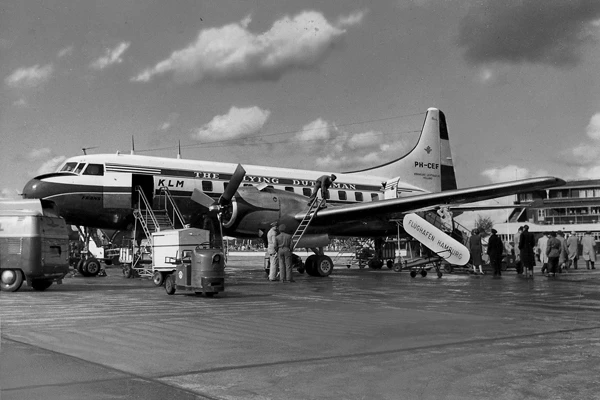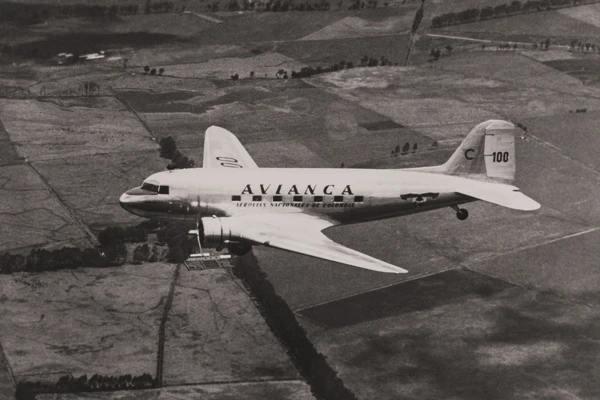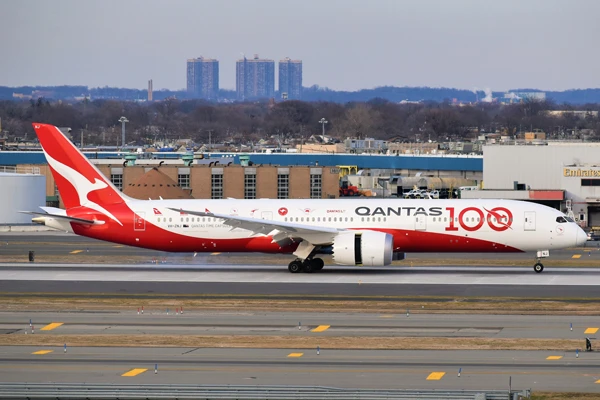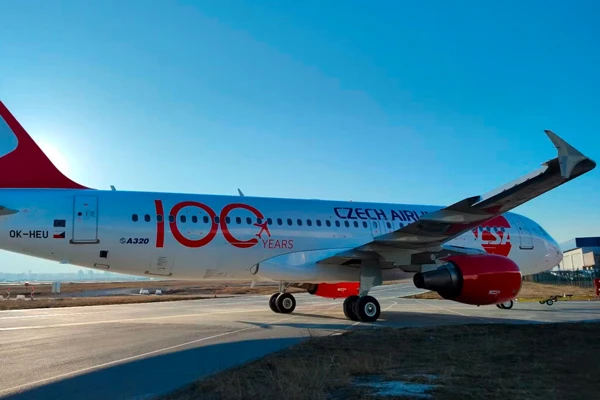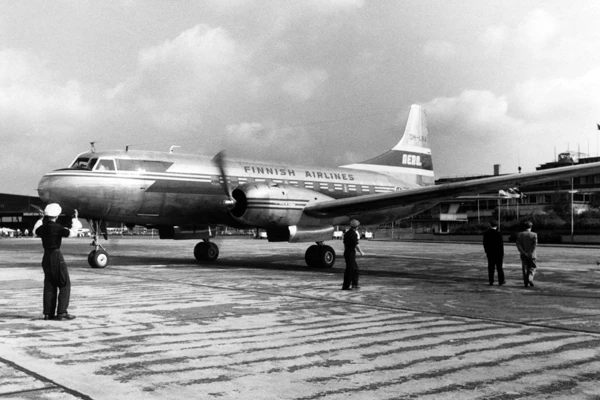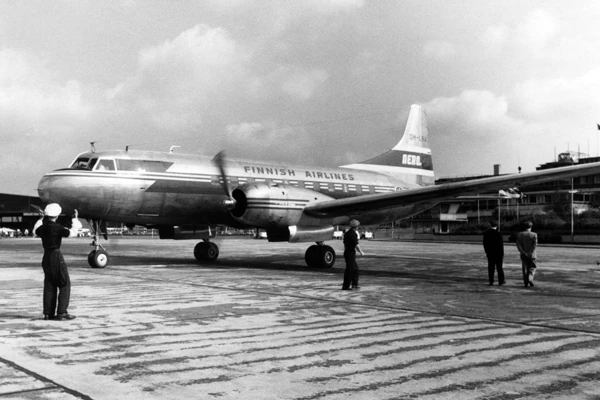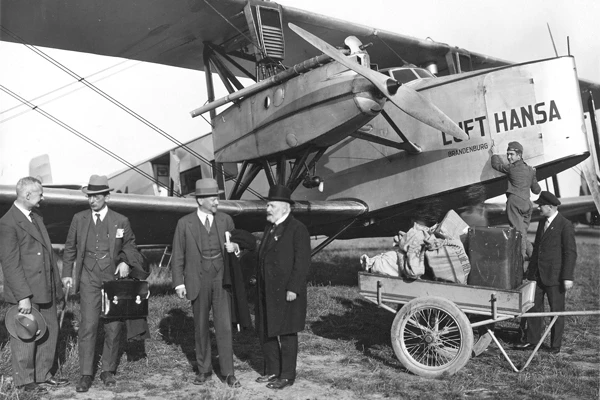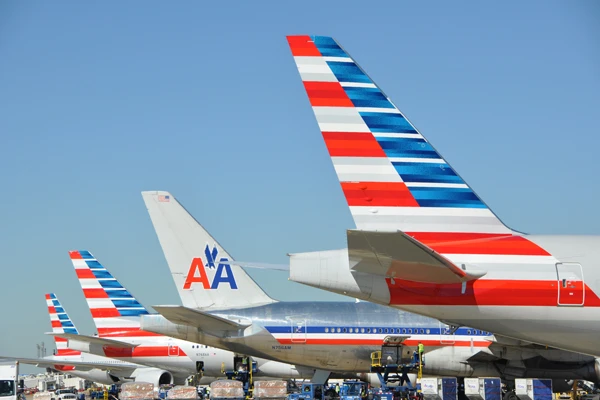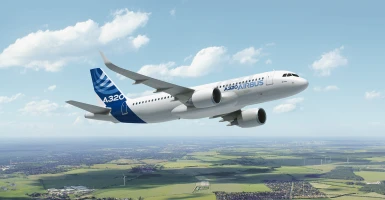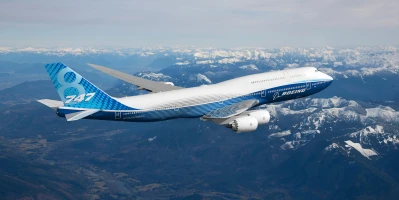aviation
More and more airlines are celebrating 100 years in the skies
KLM was first in 2019; Finnair and Czech Airlines this year and then Lufthansa in 2026: many airlines are celebrating their centennials in the 2020s.
author: Andreas Spaeth | 9 mins reading time published on: 08.08.2023
author:
Andreas Spaeth
has been traveling the world as a freelance aviation journalist for over 25 years, visiting and writing about airlines and airports. He is frequently invited to appear on radio and TV programs to discuss current events in the sector.
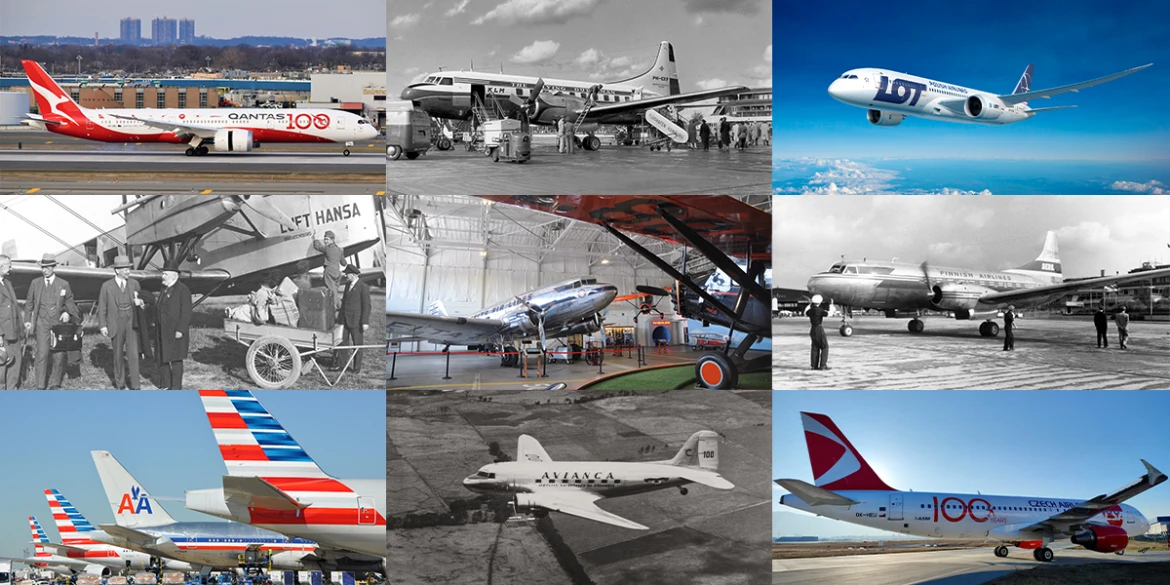
On September 12, 1919, Queen Wilhelmina of the Netherlands bestowed the title “royal” on her country’s first airline. The young company was also one of the first of its kind in the world. Many years later, it became the first airline to exist under its original name for over a hundred years. No other company in the Netherlands has ever had this royal privilege right from the start. However, the importance of the airplane as a means of civilian transportation increased shortly after World War I, and the founding of the Koninklijke Luchtvaart Maatschappij (Royal Aviation Company), or KLM, was a clear reflection of this.
It was a mere 16 years earlier, on December 17, 1903, that the Wright Brothers had flown their primitive Wright Flyer over the dunes of Kitty Hawk, North Carolina—marking the first time people had ever successfully taken off and landed in a heavier-than-air aircraft. But now things began moving very quickly, and many parts of the world saw the founding of their first airlines. A good dozen of those that have lasted into the present day are celebrating their centennials in the 2020s. AEROREPORT presents a list of these long-lived airlines in the order in which they were founded.
KLM – Netherlands – 1919
As early as 1924, KLM began offering long-haul flights to Batavia (now Jakarta) with a Fokker F.VII. In 1934, KLM ordered aircraft from Douglas in the U.S., starting with the DC-2 and followed by the DC-3, DC-4 and DC-6. Long-haul routes were resumed soon after World War II in 1946, initially to New York. KLM introduced the DC-8 as its first jet in 1960 and later remained loyal to Douglas with the DC-10 and MD-11, while also relying on the Boeing 747 as of 1971. In 2005, KLM merged with Air France.
| Founded: | October 7, 1919, by its first director Albert Plesman and a group of investors. |
| First flight: | On May 17, 1920, a chartered De Havilland DH-16 flew from London Croydon to Amsterdam Schiphol. Besides the pilot, there were two journalists on board as well as a letter from the mayor of London to the mayor of Amsterdam and a stack of newspapers. |
| Good to know: | Every year on its anniversary, KLM releases a porcelain replica of a historic house filled with jenever (Dutch gin). Business-class passengers receive one as a gift on long-haul flights, and the little houses are a popular collector’s item. |
| Fleet size in 2023: | 110 aircraft |
| Passengers in 2022: | 25.8 million |
Avianca – Colombia – 1919
International flights from Colombia to neighboring countries began in the mid-1920s. As the oldest airline in the Americas, now under a new name, in 1946 Avianca began offering international flights to the U.S. and Europe as well, using first DC-4s and then Lockheed Super Constellations as of 1951. It leased its first jets, two Boeing 707s, in 1961, and in 1976 became the first Latin American airline to lease Boeing 747s. Avianca survived two Chapter 11 bankruptcy protection proceedings in 2005 and 2021 and started over again each time.
| Founded: | December 5, 1919, as a German-Colombian airline under the name Sociedad Colombo Alemana de Transportes Aéreos (SCADTA). However, Avianca (Aerovias Nacionales de Colombia), which only launched under this name on June 14, 1940, claims the history of its predecessor as its own—which would make it the second oldest airline in the world. |
| First flight: | December 5, 1920, from Barranquilla to Puerto Colombia, with a Junkers F 13, carrying 57 mail items. |
| Good to know: | Founded by German emigrants, SCADTA had a hard time competing with the subsidized Pan American World Airways in Latin America, so Pan Am took over its shares in the late 1930s. |
| Fleet size in 2023: | 110 aircraft |
| Passengers in 2022: | 24.6 million |
Qantas – Australia – 1920
After initially transporting passengers from western Queensland to other parts of Australia, Qantas started offering flying boat services from Darwin to Singapore in May 1934. Beginning in December 1947, the airline served London with the Lockheed Constellation; the route took four days each way. Qantas began the jet era with delivery of its first Boeing 707, and from 1971 through 2020, Qantas was a major operator of the Boeing 747.
| Founded: | November 16, 1920, in Winton, Queensland, as Queensland and Northern Territory Aerial Services (QANTAS) by three Australian aviation pioneers and businessmen. |
| First flight: | November 2, 1922, with an Avro 504 biplane. |
| Good to know: | The famous kangaroo logo was first used in 1944 on flights from Sydney to Karachi, from where the British Overseas Airways Corporation (BOAC) continued on to London. Starting in 2025, Qantas plans to fly from Sydney to London nonstop in around 20 hours. |
| Fleet size in 2023: | 125 aircraft |
| Passengers in 2022: | 21.25 million |
Czech Airlines – Czech Republic – 1923
The airline opened its first international route (to Zagreb) in July 1930 and began procuring DC-2s and DC-3s in 1937. After the German occupation, the company was dissolved and not re-established until 1945; operations restarted with three Junkers Ju 52s and DC-3s. Starting in 1949, only Soviet aircraft types were used. ČSA was privatized in 1992, and since the separation of Slovakia, it has been operating as Czech Airlines. Currently owned by low-cost carrier Smartwings, the company has shrunk to a minimum after a near-bankruptcy in 2021, and now flies only to Paris.
| Founded: | July 29, 1923, as Československé státní aerolinie, formerly also ČSA for short, as the state-owned aviation company of then Czechoslovakia. |
| First flight: | October 29, 1923, with an Aero A.14 from Prague to Bratislava. Besides the pilot, the aircraft carried one passenger and 760 grams of mail. |
| Good to know: | ČSA became the third airline in the world to enter the jet era, doing so in 1957 with the Tu-104A on the Prague–Moscow route. |
| Fleet size in 2023: | 2 aircraft |
| Passengers in 2022: | (no data) |
Finnair – Finland – 1923
Finland began using permanent airfields in 1936. Flights to Europe began after the war in November 1947 with the DC-3, and as of 1953, the brand name used was Finnair. With the Convair 440, the company now offered longer routes as far as London. The Caravelle launched its jet era in 1961, and transatlantic services began in 1968 with the DC-8. Beginning in 1983, Finnair pioneered services from Europe via shorter northern routes to Asia with the DC-10; this remained a lucrative business model until the Ukraine war in 2022.
| Founded: | November 1, 1923, as Aero O/Y. |
| First flight: | March 20, 1924, with a Junkers F 13 flying 162 kilograms of mail from Helsinki to Tallinn. The aircraft operated as a seaplane since neither city had an airport yet. |
| Good to know: | Since 2022, Finnair has again been issuing certificates to passengers for crossing the North Pole, having temporarily resumed using the polar route to Japan as it did in 1983. |
| Fleet size in 2023: | 79 aircraft |
| Passengers in 2022: | 9.1 million |
Delta Air Lines – U.S. – 1925
Starting in 1934, Delta initially operated airmail flights; the company adopted its current name, Delta Air Lines, in 1945. It flew its first international routes as early as 1953, and in 1959 its jet era began with the DC-8, which Delta was the first to use. It also became the first operator of the DC-9 in 1965. Intercontinental expansion began in 1981 with the first London flights, followed by transpacific routes in 1987. Delta is the world’s top-selling airline and third in the world in terms of passenger numbers.
| Founded: | March 2, 1925, as the Huff-Daland Duster Company in Macon, Georgia, the world’s first agricultural flight company. It became Delta Air Service on December 3, 1928. |
| First flight: | June 17, 1929, from Dallas, Texas, to Jackson, Mississippi, with two stops in between. |
| Good to know: | Delta (named after the Mississippi River Delta) is headquartered and has its hub in Atlanta, home to the world’s busiest airport by passenger traffic. |
| Fleet size in 2023: | 936 aircraft |
| Passengers in 2022: | 141.6 million |
Lufthansa – Germany – 1926
In addition to its dense European network, Luft Hansa spread to other continents at an early stage. Its pilots flew nonstop from Europe to America for the first time in 1928, and a passenger route to Tokyo was soon established, as well as subsidiaries in Brazil and China. On April 1, 1955, the post-war Lufthansa took off and quickly made a name for itself all over the world. In March 1960, its jet era began with the Boeing 707. Lufthansa has been fully privatized only as of 1997.
| Founded: | January 6, 1926, in Berlin as Deutsche Luft Hansa. The separate legal entity Deutsche Lufthansa AG was established on January 6, 1953. |
| First flight: | On April 6, 1926, a six-seater Fokker F.II flew from Berlin Tempelhof to Zurich via Halle, Erfurt and Stuttgart. |
| Good to know: | The famous crane logo had already been adopted by predecessor company Deutsche Luft-Reederei in 1919 and is probably the oldest airline brand in the world. |
| Fleet size in 2023: | 328 aircraft |
| Passengers in 2022: | 93 million |
American Airlines – U.S. – 1926
In the early 1930s, 82 smaller airlines flew under their own names but under the American Airways umbrella brand. On June 25, 1936, American Air Lines launched scheduled services as an independent brand, flying a DC-3 from Newark to Chicago. The company was soon to become the largest airline in the world in every respect. American began its jet era back in 1959 with the Boeing 707. Its focus was always on domestic traffic; it wasn’t until 1982 that it operated its first flights to Europe—specifically, to London. American expanded into transatlantic services with the acquisition of TWA in 1991, and today serves 48 countries.
| Founded: | April 15, 1926, as American Airways, Inc.; it became American Air Lines in 1934. |
| First flight: | On April 15, 1926, aviation pioneer Charles A. Lindbergh, then chief pilot of one of the predecessor companies, carried airmail from St. Louis to Chicago in his De Havilland DH-4 biplane. |
| Good to know: | Starting in 1970, American Airlines was the only airline to install piano-bar lounges in the Boeing 747, complete with custom-built Wurlitzer pianos. |
| Fleet size in 2023: | 948 aircraft |
| Passengers in 2022: | 199.2 million |
Iberia – Spain – 1927
In the beginning, DLH played an essential role in Iberia’s flight operations, delivering Junkers Ju 52s from Germany as late as 1939. As early as 1946, Iberia was the first European airline to fly to South America, when it began a service to Buenos Aires with the DC-4, and starting in 1954, with the Lockheed Super Constellation. Jets joined the fleet in 1961: the DC-8 and the Caravelle. Iberia was privatized in 2001.
| Founded: | June 28, 1927, with investments from a Spanish financier and Deutsche Luft Hansa (DLH). |
| First flight: | December 14, 1927, from Barcelona to Madrid with a Rohrbach Ro VIII Roland chartered by DLH. |
| Good to know: | From 1977 to 2013, Iberia tried to add a touch of royal splendor by introducing a crown into its corporate logo, but, unlike KLM, this was only a temporary move. |
| Fleet size in 2023: | 89 aircraft |
| Passengers in 2022: | 12.2 million |
LOT – Poland – 1928
The first international flight took off from Warsaw to Vienna on August 2, 1929; the fleet included Junkers F 13s and Fokker F.VIIs. From 1935 onward, LOT used American aircraft such as the DC-2, and transatlantic flights were already planned for 1940, although the war intervened. The company made a fresh start as soon as 1946, and even as part of the Eastern Bloc, socialist Poland sporadically flew Western aircraft and served Western Europe. LOT’s first jet, the Tupolev Tu-134, joined the fleet in 1968. In 2012, LOT became the first European operator of the Boeing 787.
| Founded: | December 29, 1928, as Polskie Linie Lotnicze (LOT). |
| First flight: | January 1, 1929. |
| Good to know: | In the late 1970s and 1980s, about 20 LOT flights were hijacked to Berlin Tempelhof (West Berlin); LOT was thus referred to in Berlin dialect as “Landet ooch Tempelhof” (also lands at Tempelhof). |
| Fleet size in 2023: | 73 aircraft |
| Passengers in 2022: | 8.4 million |





